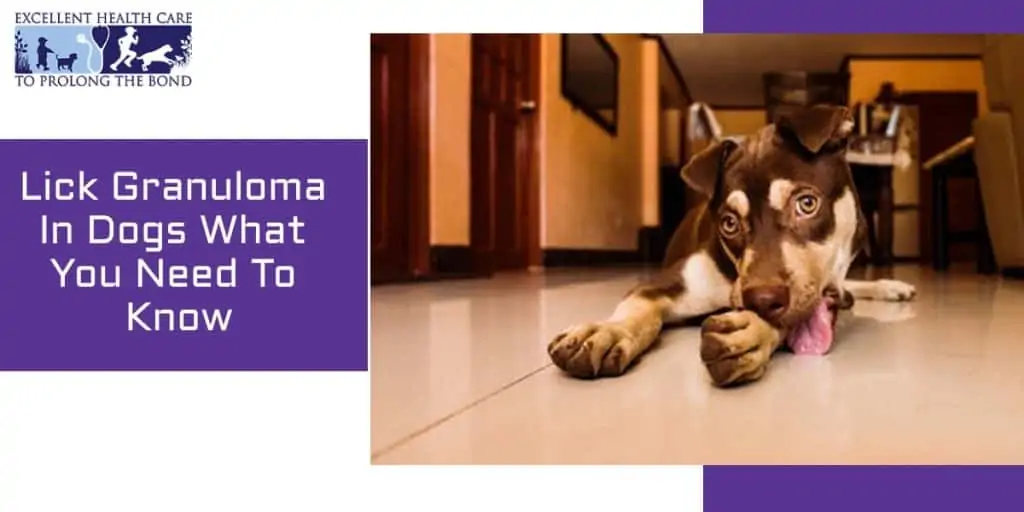
Skin problems in dogs are a common concern. Identifying the symptoms at the earliest can be the key to nipping the concern at its root.
Among dog skin problems, lick granuloma or Acral Lick Granuloma is skin issue that has been on the rise, especially in the past decade.
Untreated or unattended lick granuloma can lead to bigger concerns like severe lesions. The causes of such problems are often limited to different parasites, including mites and fleas.
Dogs are more prone to this problem than cats. A concern like a lick granuloma is mostly seen in medium to large dog breeds, specifically Labrador Retrievers, Doberman Pinschers, and Irish Setters.
However, it is important to note that any breed is vulnerable to acral lick dermatitis.
Causes of the problem
The root cause of lick granuloma is the obsession of a dog about licking its lower limb, especially the carpal joint or wrist.
The problem can be both physical as well as psychological. Some psychological aspects, such as anxiety, obsessive-compulsive disorder, or fear can trigger this skin problem.
Lick granulomas can be triggered due to different reasons and each of them needs different preventive measures.
Pain: Dogs have a tendency to respond to pain by constant licking, this habit can cause lick granuloma.
Behavioral: conditions like anxiety and stress can also compel your dog to indulge in prolonged self-licking.
Parasites: Sometimes, dogs constantly lick to their body parts to get rid of itching; this, in turn, can trigger this skin concern.
Diagnosing lick granuloma
The appearance of the wound in addition to the location can be the major give away lick granuloma. Lick granuloma can sometimes be diagnosed with arthritis. Therefore, do not be surprised if the veterinarian prescribes X-rays to check on arthritis.
Veterinarians can also recommend skin diagnosis if your dog does not respond to the treatment to rule out concerns like mange or a tumor.
If you get familiar with this problem once, you won’t forget it. It’s a lesion that looks like a bald part of the skin and gets red from constant licking.
The affected skin is somewhat different from the other parts that it appears to be sticky and thickened. However, it’s also dry sometimes. A sticky lick granuloma can emit a foul smell.
Where they are mostly found?
As per the theory, lick granuloma can appear anywhere on your pet’s body which is accessible by his own tongue. So, lesions in the upper body portion are quite obvious.
Remember, this skin problem can be very painful and annoying for your pet. So, it is ideal to get it handled under an expert’s supervision.
Is there any treatment?
It’s completely curable. However, the path to recovery can be time-consuming. The treatment contains anti-inflammatory and sometimes, steroid therapy. The main objective here is to alleviate the inflammation and restore the skin.
Spending time with your dog and taking him for regular checkups can be the secret to ensure that he is not diagnosed with a condition like a lick granuloma. Foresee the possibilities and act smart to ensure the safety of your pet.
